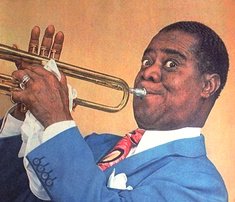|
Hint
|
Answer
|
|
was an American philosopher and psychologist who was also trained as a physician. He developed a theory of self that was divided into two main categories. He turned his attention to understanding how mental processes and behaviors serve real-world goals. James emphasized the importance of practical utility in psychological theories, leaving a lasting impact on the field and beyond.
|
William James
|
|
was a Russian physiologist known primarily for his work in classical conditioning. Pavlov extended the definitions of the four temperament types under study at the time: phlegmatic, choleric, sanguine, and melancholic. The concept for which Pavlov is famous is the "conditioned reflex".
|
Ivan Pavlov
|
|
was an American psychologist who established the psychological school of behaviorism. Watson promoted a change in psychology through his address. Through his behaviorist approach, Watson conducted research on animal behavior, child rearing, and advertising.
|
John Watson
|
|
was an American psychologist, behaviorist, author, inventor, and social philosopher. He innovated his own philosophy of science called radical behaviorism. His Skinner Box experiments with rats and pigeons demonstrated the impact of rewards and punishments on behavior.
|
Burrhus Skinner
|
|
was a British mathematician, logician, cryptanalyst and computer scientist. He was highly influential in the development of computer science, giving a formalization of the concepts of "algorithm" and "computation" with the Turing machine, which can be considered a model of a general-purpose computer
|
Alan Turing
|
|
Warren McCulloch, an American neurophysiologist, partnered with Walter Pitts to create a pioneering mathematical model of neural networks. Their work became fundamental in early artificial intelligence and cognitive science, offering insights into how the brain functions as a computational system. McCulloch's interdisciplinary approach helped connect neuroscience and computing, leaving a lasting impact on both fields
|
Warren McCulloch
|
|
was a logician who worked in the field of cognitive psychology. He is best remembered for having written, along with Warren McCulloch, a seminal paper. This paper proposed the first mathematical model of a neural network. The unit of this model, a simple formalized neuron, is still the standard of reference in the field of neural networks. It is often called a McCulloch-Pitts neuron.
|
Walter Pitts
|
|
is an American cognitive scientist in the field of artificial intelligence (Al). He developed, with Seymour Papert, the first Logo "turtle". Minsky also built, in 1951, the first randomly wired neural network learning machine, SNARC. He is especially known for his work on neural networks, which simulates aspects of human brain function.
|
Marvin Minsky
|
|
|
Hint
|
Answer
|
|
was an American mathematician and philosopher. Wiener is considered the originator of cybernetics. His work left a lasting impact, especially in the realms of artificial intelligence and the study of cognition. In simple terms, he explored how things, whether biological or artificial, manage and improve themselves through feedback processes
|
Norbert Wiener
|
|
he was a philosopher and psychologist. In his book, he laid the foundation for the concept of mental models, according to which the mind creates models of reality and uses them to predict similar future events. He was one of the first practitioners of cognitive science.
|
Kenneth Craik
|
|
was a neuroanatomist, physiologist and pioneer in research on the localization of mental functions in the brain. Considered the founder of phrenology.
|
Franz J. Gall
|
|
a German physician, collaborated with Franz Joseph Gall to develop phrenology, a pseudoscience that claimed personality traits could be determined by examining the shape of the skull.
|
Johann Spurzheim
|
|
He was a lecturer in pathology and physiology at the London Hospital. In 1859 he became a doctor in a hospital for epilepsy patients and paralyzed people. He is the discoverer of symptomatic epilepsy, which occurs in the conscious state and affects only a few muscle groups - the so-called seizures Jacksonian. He will also create a theory of mental evolution.
|
John H. Jackson
|
|
was a French physician, surgeon, anatomist, and anthropologist. He is best known for his research on Broca's area, a region of the frontal lobe that has been named after him. patients suffering from aphasia contained lesions in a particular part of the cortex, in the left frontal region. Area is involved with articulated language. His work revealed that the brains of
|
Paul Broca
|
|
important studies on aphasia: Shortly after Paul Broca published his findings on language deficits caused by damage to what is now referred to as Broca's area, Wernicke began pursuing his own research into the effects of brain disease on speech and language. Wernicke noticed that not all language deficits were the result of damage to Broca's area
|
Karl Wernicke
|
|

